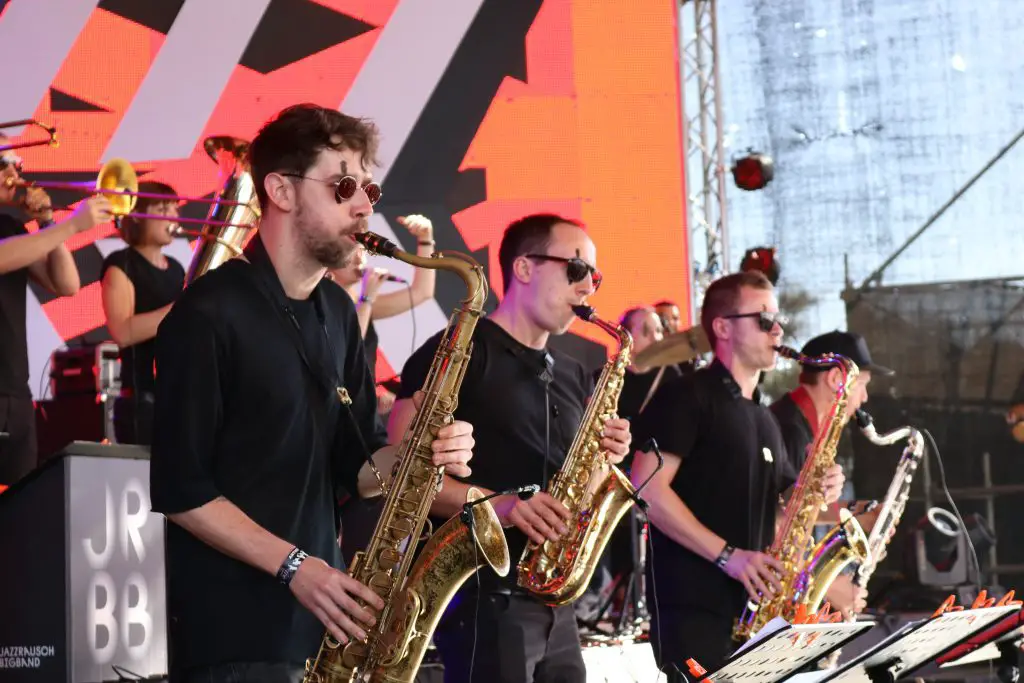Welcome, groove-seekers, to this rhythmic exploration of an essential yet often-overlooked element in music – groove! If you’ve ever wondered what makes a song irresistible, causing your body to sway to the beat involuntarily, you’ve come to the right place.
In this blog post, we’ll dive deep into the world of groove, that magical ingredient that keeps your head nodding and your feet tapping. So, tighten your drum heads and fasten your bass strings as we embark on a groovy journey that’ll lead us to understand musical groove, its role in different genres, and how you can develop your very own groove.
What is groove in music? Groove is a quality of music that creates a rhythmic feel and propels listeners to move or dance to the beat. It is a combination of timing, dynamics, and interplay among different instruments that gives a song its unique character and appeal.
What is groove?
Groove in music refers to the rhythmic quality that creates a sense of flow and propels listeners to move or dance to the beat. It is the combination of timing, dynamics, and interplay among different instruments that gives a song its unique character and appeal. Groove is an essential element that can make the music feel more engaging and lively.

AKAI Professional MPK Mini MK3

AKAI Professional MPK Mini MK3
What are the key components of groove?
There are key components of groove that musicians need to understand to develop a stronger sense of groove in their music and create more engaging, memorable songs. These components include:
1. Timing
This is the precise placement of beats and notes in relation to the underlying pulse of the music, which can contribute to the overall feel of the groove.
2. Dynamics
This refers to the variations in volume and intensity of individual notes or phrases that can create a sense of movement or push and pull within the groove.
3. Syncopation
This is the deliberate use of off-beat or unexpected rhythmic accents that can add complexity and interest to the groove.
4. Interaction
This is the interplay between different instruments, such as the bass and drums, which can create a sense of conversation or complementarity within the groove.
Why is groove important in music?
Groove is important in music because it contributes significantly to the listener’s engagement and overall musical experience. The term “groove” refers to the rhythmic feel of a song and how the instruments of the rhythm section interact to create a sense of propulsive rhythm.
By enhancing the rhythmic feel of a song and the interaction between instruments, groove adds depth and complexity to the music.
When listeners sense the effect of changing patterns in a propulsive rhythm, they experience a “feel” that often encourages them to move or dance to the beat. Groove affects listener engagement by creating a sense of movement and flow in the music. The rhythmic interaction between different instruments, such as the bass, drums, guitar, and keyboards, generates a propulsive feel that listeners can connect.
This connection often compels listeners to move their bodies, tap their feet, nod their heads, or dance to the beat. Groove can indeed improve the overall musical experience. By enhancing the rhythmic feel of a song and the interaction between instruments, groove adds depth and complexity to the music.
Adjusting the performance of notes or phrases by slightly speeding up or slowing down can be musically effective, triggering different emotional responses in the listener. In genres such as salsa, funk, rock, fusion, and soul, groove plays a vital role in shaping the musical experience and creating an immersive, enjoyable atmosphere for listeners.
What are some examples of groove in different music genres?
Groove is a significant feature of various music genres and is often characterized by the rhythmic patterns and interactions between the instruments in a song. It can be found in genres such as jazz, funk, R&B, rock, pop, and many Latin and African music styles.
In jazz music, groove is expressed through the persistent repetition of rhythmic units created by the interaction of the rhythm section, which typically includes drums, bass (electric or double bass), guitar, and keyboards. The sense of “swing” in jazz is often attributed to the groove created by the band’s rhythm section, resulting in a propulsive and engaging rhythm that encourages movement.

Groove plays a vital role in both funk and R&B music. In funk, the emphasis is on strong, syncopated basslines and drum patterns, which create a highly danceable and infectious rhythm. Similarly, in R&B, groove is achieved through the interaction of various instruments, often featuring smooth, soulful rhythms that evoke a sense of movement and emotional connection with the listener.
Groove can also be found in rock and pop music. In rock, the rhythm section’s interplay often creates a driving, energetic feel that resonates with listeners and encourages movement. Pop music, on the other hand, frequently relies on catchy, danceable beats created by the rhythm section, which contributes to the song’s overall appeal and memorability.
How can musicians develop their own groove?
Here are some tips for musicians to develop their own groove:
- Listen to various music genres: Exposure to different styles and rhythms can inspire and help musicians understand how groove is created in various contexts.
- Focus on the rhythm section: Pay attention to the interaction between drums, bass, guitar, and keyboards, as the rhythm section is crucial for creating a propulsive rhythmic feel.
- Practice playing with a metronome: This can help musicians develop a solid sense of timing, essential for establishing a consistent groove.
- Experiment with syncopation: Syncopation is the intentional disruption of the regular flow of rhythm. Musicians can create a more engaging and dynamic groove by playing with syncopated patterns.
- Study the grooves of influential musicians: Analyze the work of artists known for their groove, such as James Brown, Prince, or Stevie Wonder, to learn from their rhythmic techniques and approaches.
- Jam with other musicians: Playing with other musicians helps develop a shared sense of groove and improves the ability to adapt and respond to different rhythmic patterns.
- Develop a unique playing style: Incorporate personal influences and ideas into the rhythm, making it distinctive and authentic.
- Record and analyze performances: Listening back to recordings can help musicians identify areas for improvement and refine their groove over time.
Conclusion
Well, groove-seekers, we’ve reached the end of our rhythmic adventure. As the saying goes, “All’s well that grooves well,” right? So, did I help you find your inner rhythm master (or at least get you started on your journey to groove greatness)? And did I cover everything you wanted to know? Let me know in the comments section below – I read and reply to every comment.
If you found this article helpful, share it with a friend, and check out my full blog for more tips and tricks on exploring the magical world of music. Thanks for reading, and keep on grooving!
Key takeaways
This article covered what is groove in music. Here are some key takeaways:
- Groove is a rhythmic quality in music that creates engagement and encourages movement.
- It can be found in various music genres, including jazz, funk, rock, and pop.
- Groove is essential for listener engagement and overall musical experience.
- Musicians can improve their groove by practicing with a metronome and focusing on timing and dynamics.
- Influential groove-oriented musicians and songs showcase the concept of groove in music.















